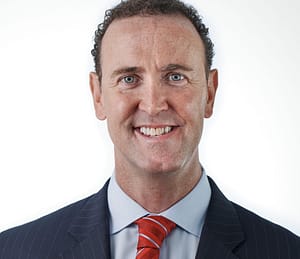According to the Consumer Financial Protection Bureau (CFPB), outstanding student loan debt in the United States topped $1 trillion in 2011, comprised of about $864 billion of federal student debt and $150 billion of private student loan debt. The average debt climbed to about $24,000 in 2009.
Default rates on both federal and private loans have skyrocketed in recent years. The Department of Education’s default rates in February 2011, revealed that the default rate at for-profit colleges was highest at 25%, nearly double the national average.
The consequences of student loan defaults have grown enormously over time as the government’s collection powers have steadily increased. The government can garnish a borrower’s wages without a judgment, seize the borrower’s tax refund (even an earned income credit) and seize portions of federal benefits such as Social Security. Unlike any other type of debt, there is no statute of limitations. The government can pursue borrowers to the grave.
For borrowers in default, education, initially seen as a way out of poverty, instead often leads them into a cycle of endless debt. They find themselves in a trap. Student loans from the past keeps them from going back to school and moving into higher-paying jobs.
Brief History of Student Loans
Before World War II, American colleges provided financial aid directly to their students. The 1944 Servicemen’s Readjustment Act (“G.I. Bill”) signaled a new type of government involvement in education aid. The GI Bill guaranteed military personnel a year of education for ninety days of service. The GI Bill was more popular than its drafters envisioned. To keep up with demand, the government added the Perkins Loan program.
The Federal Family Education Loan Program (FFELP) as known as the guaranteed loan program was created in the Higher Education Act of 1965. The Higher Education Act Amendments of 1992 created a new generic name, Federal Family Education Loans (FFELs), for the major forms of federal student loans.
Banks were initially reluctant to participate in the guaranteed loan program. Congress encouraged participation by covering a large percentage of any losses through loan guarantees. Congress also created a government-sponsored enterprise – the Student Loan Marketing Association (known as Sallie Mae) as a secondary market for guaranteed student loans.
The Student Loan Reform Act of 1993 significantly changed the student loan landscape by creating a new Federal Direct Loan Program. This program issues Direct Loans directly from the federal government to the student. Lenders and guaranty agencies are cut out of the process.
The FFEL program was eliminated as part of the Health Care and Education Reconciliation Act of 2010. Although the FFEL program is over as of July 2010, there are many existing FFEL loans that will be held, serviced and collected by FFEL lenders, servicers, and guaranty agencies for many more years.
As of July 1, 2010, federal Stafford loans, Plus Loans and Direct consolidation loans are made to students through the Direct Loan Program only. All federal loans borrowers may obtain Direct consolidation loans. However, they must have at least one FFEL or Direct loan to qualify for consolidation.
First Step – Determine What Type of Loan You Have
The most efficient way to find out what type of government loan is through the National Student Loan Data System (NSLDS). The NSLDS is the Department of Education’s central database for student aid. This information is available on the Internet at http://www.nslds.ed.gov/nslds_SA/
Borrowers can also call the Federal Student Aid Information Center at 1-800-4-FED-AID or 1-800-730-8913 (TDD). The Center’s counselors can help borrowers, over the phone, to figure out what types of loans they have.
Second Step – Apply for Income-Based Repayment (OLD IBR)
The IBR plan went into effect for Direct Loan and FFEL borrowers on July 1, 2009. Borrowers who repay through the IBR program will have their remaining balances forgiven after twenty-five years and their monthly payment will be decreased to reflect their current income and family size. Borrowers must have a partial financial hardship to repay through IBR.
As of September 26, 2012, Direct Loan program and some FFEL program borrowers who wish to apply for IBR on-line will be able to go to a single website, www.StudentLoans.gov. The website interfaces with the National Student Loan Data System and the Internal Revenue Service to help borrowers submit electronic IBR applications. The website is also designed to allow borrowers to fulfill their annual income documentation requirement on-line. Further information explaining IBR is available on the Internet at http://www.ibrinfo.org/
OR
Third Step – Apply for Pay As You Earn (NEW IBR)
As of December 21, 2012, recent college graduates with federal student loans can apply to lower their monthly payments using the Pay As You Earn plan. This new repayment plan has a lower monthly payment cap than the more widely available Income-Based Repayment (IBR) plan. Pay As You Earn also provides forgiveness after 20 years of payments, rather than 25 years in IBR.
Eligible borrowers can elect to pay 10% of their discretionary income and be eligible for forgiveness after twenty years. Eligible borrowers are defined as people who were new borrowers in 2008 or after and received a disbursement of a loan in 2012 or after.
Fourth Step – Apply for the Public Service Loan Forgiveness Program
A borrower must be under the Income Based Repayment (IBR) plan to qualify for the PSLF program. The PSLF Program was established to encourage individuals to enter and continue in full-time public service employment by forgiving the remaining balance of their Direct Loans after they have made 120 qualifying monthly payments after October 1, 2007 while employed full-time by a public service organization.
A Public Service Organization is defined as employment with a federal, state, or local government agency, entity, or organization or a non-profit organization that has been designated as tax-exempt by the Internal Revenue Service (IRS) under Section 501(c)(3) of the Internal Revenue Code (IRC). The IRS has a searchable database of 501(c)(3) organizations at http://www.irs.gov/app/pub-78/.
Public service jobs include, among other positions, emergency management, government, military service, public safety and law enforcement (police and fire), public health (including nurses, nurse practitioners, nurses in a clinical setting, and full-time professionals engaged in health care practitioner occupations and health care support occupations), public education, early childhood education (including licensed or regulated childcare, Head Start, and State-funded prekindergarten), social work in a public child or family service agency, public services for individuals with disabilities or the elderly, public interest legal services (including prosecutors, public defenders and legal advocacy on behalf of low-income communities at a nonprofit organization), public librarians, school librarians and other school-based services, and employees of tax exempt 501(c)(3) organizations. Full-time faculty at universities, as well as faculty teaching in high-need subject areas and shortage areas (including nurse faculty, foreign language faculty, and part-time faculty at community colleges), also qualify. Further information explaining IBR is available on the Internet at
http://studentaid.ed.gov/repay-loans/forgiveness-cancellation/charts/public-service



